Editor’s Note: This is the second of two columns on James Robenalt’s January 1973: Watergate, Roe v. Wade, Vietnam, and the Month That Changed America Forever
To conclude this collusive two-part series of columns on my friend Jim Robenalt’s new book, I wanted to draw out the new information he discovered relating to Roe v. Wade. While Jim is a practicing attorney who writes for the general reader, I asked him when addressing my questions to focus as well on matters that might be of unique interest to readers with a legal background.
QUESTION: Tell us—what is new in your book about Roe v. Wade?
ROBENALT: Three things. First, I put Roe in the context of the other great changes in January 1973 to explain how those events, when combined, helped to cause our current government of “no compromise.” Second, I show that Roe was actually decided in June 1972 in a way that was very different from its ultimate outcome. The change had a decisive impact on the arc of our national politics. Third, I demonstrate that it was really Justice Powell who was the architect of Roe’s “viability” standard, which is the only part of Roe that still survives. I was fortunate to have access to Powell’s law clerk from the time, Larry Hammond, who played a pivotal role in leading Powell to the viability standard.
QUESTION: Could you explain your first finding, that January 1973 was a turning point?
ROBENALT: In hindsight, it doesn’t take much to see that January 1973 was an important month for American politics, but to my knowledge, no one has put it all together. Start with these facts. Harry Truman died the day after Christmas 1972, and his memorial service was held in Washington, D.C. on January 5, 1973, at the National Cathedral. Nixon and Kissinger negotiated the Paris Peace Accords and ended the Vietnam War for the United States in January 1973. The Watergate burglars went on trial in Judge John Sirica’s courtroom that month, and Nixon delivered his game-changing second inaugural, ushering in what would become known later as the “Reagan Revolution.” And, of course, the Supreme Court decided Roe v. Wade, which it published the same day Lyndon Johnson died in Texas.
Clearly something was afoot in this packed month. In retrospect, the month was both symbolic and real turning point: the New Deal figuratively died with Harry Truman’s passing, the Vietnam War would be lost, the LBJ’s Great Society experiment was short-cut, the Civil Rights movement stalled, a presidency would begin a slow spiral to Nixon’s resignation, the “me generation” found its voice, and Roe v. Wade opened up a gaping wound in the body politic, accelerating the political polarization and party realignment that Nixon had started with his counterrevolution.
QUESTION: Could you explain the debate about Roe being the cause of the political polarization that followed that ruling?
ROBENALT: Legal scholar and journalist Linda Greenhouse, along with her co-author regarding Roe Reva Siegel, and a few others, argue that the divisive political climate that has vexed our national politics pre-dates Roe, and those who blame Roe for partisan conflict over abortion have it backward. More specifically, those taking this positon cite Richard Nixon, not Harry Blackmun in writing Roe, as the villain. The conflict over abortion developed, they say, as the parties adjusted and realigned as part of the Nixon counterrevolution. For a full treatment of their argument, see Linda Greenhouse & Reva Siegel, Before (and After) Roe v. Wade: New Questions About Backlash, 120 Yale L.J. 228 (2011).
I agree that the Nixon counterrevolution started party realignment, but I find Roe merely added a powerful accelerant to the mix and the rise of the Religious Right in politics. Many see a direct line from Roe to the evangelical movement of the 1980s and the “Teavangelicals,” as they have more recently been labeled, of today. One common thread being the unwillingness to compromise with opponents, who are viewed not just as politically wrong, but as evil people.
Looking back on Roe, Justice Scalia pointed out in his (blistering) dissent in Planned Parenthood of Southeastern Pennsylvania v Casey, 505 U.S. 833, (1992), that it was a cause of the deep division in our politics:
Not only did Roe not, as the Court suggests, resolve the deeply divisive issue of abortion; it did more than anything to nourish it, by elevating it to the national level where it is infinitely more difficult to resolve. National politics were not plagued by abortion protests, national abortion lobbying, or abortion marches on Congress, before Roe v. Wade was decided. Profound disagreement existed among our citizens over the issue—as it does over other issues, such as the death penalty—but that disagreement was being worked out at the state level. As with many issues, the division of sentiment within each State was not as closely balanced as it was among the population of the Nation as a whole, meaning not only that more people would be satisfied with the results of state by state resolution, but also that those results would be more stable. Pre-Roe, moreover, political compromise was possible.
QUESTION: What about your second point that Roe was actually decided in June 1972 in a way that was very different from its ultimate outcome, thus it was resolved on a more limited basis before it was later reargued? This, of course, raises the question of who should decide this matter: the states or the nation’s highest court?
ROBENALT: Given how significant Roe has been to national politics, it is important to question. The issue is as contested today as it has ever been—when it is today conceded that a vast majority of Americans agree with a woman’s right to abort. Nonetheless, there remains the perplexing question for many as to who should decide the issue. Frankly, I am not sure there is a right answer to the question rather reasonably and informed people of good faith, certainly such people whom I respect of that nature, can hold diametrically opposed opinions.
That is why is it intriguing (and historically important) to note that Justice Blackmun’s first drafts of Roe, and its companion case, Doe v. Bolton (out of Georgia), would have recognized the fundamental right of a woman to make her own private decision to abort but left it to the states to determine when during a pregnancy the countervailing right of the unborn fetus would become sufficiently compelling to allow states to prohibit an abortion. As Blackmun noted in his first draft of Doe v. Bolton (which originally was for Blackmun the more significant and substantive case):
The heart of the matter is that somewhere, either forthwith at conception, or at ‘quickening,’ or at birth, or at some point in between, another being becomes involved and the privacy the woman possessed has become dual rather than sole. The woman’s right of privacy must be measured accordingly. It is not for us of the judiciary, especially at this point in the development of man’s knowledge, to speculate or to specify when life begins.
The drafts of Doe and Roe that Blackmun circulated in May 1972 commanded a majority. Of the seven justices who heard the oral arguments (the Court was short two justices at the time, with the resignations and then deaths of Justices Black and Harlan in the fall of 1971), five concurred in Blackmun’s drafts and two would have dissented. Justice William O. Douglas wrote a dissent (which he never published) to the agreement to reargue in which he made it clear that the Blackmun drafts had resulted in a majority and should have been issued in June 1972.
Despite this, the opinions were not handed down in June 1972. Why? The cases were reargued, to allow Justices Powell and Rehnquist, who had joined the Court after the first argument, to participate in the decisions. The reasons for reargument are complex but it seems likely that Chief Justice Burger pushed his friend Harry Blackmun (the two knew each other from childhood) to seek reargument. Burger was uncomfortable with Blackmun’s drafts and probably thought that Powell and Rehnquist would move the Court to the most conservative result, perhaps even reversing Blackmun’s limited recognition of the right to abort as a fundamental right of privacy.
If so, Burger’s maneuver backfired. Justice Powell’s law clerk, Larry Hammond, brought to Powell’s attention a Connecticut case, decided in September 1972, that picked viability—when the fetus can live outside the womb—as the point during a pregnancy when it could be said, without much debate, that the state’s interest in protecting the fetus became compelling.
Obviously, Blackmun’s first drafts—the ones Douglas said had been voted on—did not delineate when the fetus’s rights became compelling (that is, justifying a state’s interest in protecting that life or potential life of a fetus). And Blackmun’s second draft (after reargument) initially drew the line after the first trimester (three months). It wasn’t until Powell interceded that Blackmun moved the line all the way to viability, which is essentially at the end of the sixth month.
There has been virtually no public recognition of this sweeping change in how Roe was decided. While a few scholars have noted the change and its significance, the acknowledgment of how Roe went from no line-drawing to viability has never made it into the public consciousness or the debate about the case or the issue.
Looking back at the draft opinions Blackmun circulated in the spring of 1972, one of those scholars, Bernard Schwartz, observed how different the political landscape may have been had those drafts issued as the opinions of the Court: “The subsequent schism that has been a major factor in American life might have been postponed or avoided—or possibly mitigated by it relegation to political rather than legal resolution.” Bernard Schwartz, The Unpublished Opinions of the Burger Court (Oxford: Oxford University Press, 1988), 83.
Whether one believes that this issue should be handled by the courts or legislatures, it is important to be historically accurate about how the case went through its decision cycle in the Supreme Court. Roe v. Wade was not always and immutably Roe v. Wade.
QUESTION: Can you tell us more about Justice Powell’s contribution to the eventual result in Roe v. Wade and why is it still significant today?
ROBENALT: As pointed out above, it was Justice Powell’s law clerk, Larry Hammond, who championed the Connecticut case that proposed viability as the line before which the state could not prohibit a woman’s choice to abort a pregnancy. Again, this is something about which little has been written. Although Justice Blackmun was the author of the Court’s opinion, the core holding—the one that survives intact today—was a consequence of Powell’s actions.
In case you are skeptical, take a look at what Powell himself wrote to Hammond in January 1973, just weeks before the opinion came down—in a memo that he probably thought at the time would never see the light of day. “It seems to me that Justice Blackmun has reached a constitutionally sound result and stated it clearly,” Powell wrote in an internal memo to Larry Hammond on January 3, 1973. “Although he gives credit in his memo of December 1 to others, I suggest that you are entitled – particularly in view of your education of me on the viability issue – to credit that is nonetheless substantial because it will never be recognized.” Powell wrote: “I think I was perhaps the first to press for viability change.”
And there is continuing significance in Hammond’s contribution. To understand why Hammond argued in favor of viability, one needs to study the memos he wrote to Powell during the Court’s deliberations. Start with the fact that Blackmun’s second draft—after reargument—picked the end of the first trimester as the point after which a state had a compelling interest in protecting prenatal life. That created a problem for Hammond, as it did not provide relief to some of the very women who needed to consider abortion the most—the poor, the uneducated, the young. Wealthy women could travel or convince sympathetic local doctors to provide what were euphemistically called “therapeutic” abortions; poor women had no such relief. A first trimester cut-off was too early in the pregnancy for most poor women, Hammond believed.
Hammond’s writings about this are fascinating on several levels (especially when one keeps in mind that no litigant was arguing for a viability standard, let alone the tripartite standard that emerged). First, on accepting viability (from Hammond’s November 27, 1972, memo to Powell on Blackmun’s second draft of Roe v. Wade):
In this case, since the statutory prohibition was total [the Texas statute prohibited abortions except to save the life of the woman], it is unnecessary to the result that we draw the line. If a line ultimately must be drawn, it seems that ‘viability’ provides a better point. This is where Judge Newman [the Connecticut case] would have drawn the line. It is consistent with common law history. Moreover, it comports with the rationale that the controversy over the finding of the time of the beginning of ‘life’ is so great, and affects such intensely personal interests, that the Ct will not allow the state to make that judgment. At some point the controversy does not appear to be so great. Most people would probably agree that the state has a much greater interest in protecting a viable entity than it does at some earlier point.
Second, on why a first trimester line would not protect the most vulnerable women, who arguably were in greatest need of the right (from Hammond’s December 11, 1972, memo to Powell):
For many poor, or frightened, or uneducated, or unsophisticated girls, the decision to seek help may not occur during the first 12 weeks. The girl might be simply hoping against hope that she is not pregnant but is just missing periods. Or she might know perfectly well she is pregnant but be unwilling to make the decision—unwilling to tell her parents or her boyfriend.
This reasoning found favor with other justices. Justice Thurgood Marshall, for example, agreed to a viability standard just days after Hammond’s memo to Powell, echoing Hammond’s sentiments in his own December 13, 1972 letter to Blackmun:
My guess is that older women, married women and others who are experienced or sophisticated will know when they are pregnant and be willing to acknowledge it. They also will know where abortions can be obtained (e.g., in New York), and how to go about arranging for them. But the women who most need the benefit of liberalized abortion laws are likely to be young, inexperienced, unsure, frightened and perhaps unmarried. It may well be that many in this category either would not know enough to be sure of pregnancy in the early weeks, or be too embarrassed to seek medical advice prior to the expiration of the first trimester. If there is a constitutional right to an abortion, there is much to be said for making it effective where and when it may well be needed most.
The question of creating a right that serves women most affected by unwanted pregnancies rages still. Just this past month, the Fifth Circuit Court of Appeals upheld the 2013 Texas restrictions that would effectively close all but 7 out of 40 of the state’s abortion facilities. It mattered not, as it did when Roe was decided, that the burden would fall most heavily on the poor, “those women who have the fewest financial resources, those who must travel long distances, and those who have difficulty explaining their whereabouts to husbands, employers, or others.”
The result in Whole Woman’s Health v. Cole, springs from the Supreme Court’s opinion in Casey in 1992, in which the viability standard was reaffirmed (a state cannot prohibit a woman from aborting a pregnancy prior to viability) but the rest of Roe was gutted. Casey allowed states to regulate abortions not just on behalf of an interest in the health of the pregnant woman, but also on behalf of the life of the fetus from the time of conception. To accommodate the apparent inconsistency with Roe’s finding that the life or potential life of the fetus does not become compelling until viability, the Casey Court threw out the tripartite structure of Roe and allowed restrictions (who can perform abortions, where can the abortion be performed) as long as the restriction does not impose an “undue burden” on a woman’s right to choose (defined as having the purpose or effect of placing “a substantial obstacle in the path of a woman seeking an abortion of a nonviable fetus”).
“Undue burden” is, to say the least, a highly subjective standard. Strict scrutiny has been replaced by rational basis. It seems unlikely that the same justices who decided Roe would agree with the Texas restrictions. But since Casey, the slope has been set for a slide to greater and greater regulations and deference to state legislatures. One can ask whether Roe has already been effectively overturned.
It leaves one to wonder how this all would have played out if, as Justice Scalia regularly suggests, the Supreme Court would have left it to states to decide—not whether a right to an abortion exists, but when it can be prohibited. It seems that even though the viability vestige remains from Roe, the reason for its establishment in the first place—serving the poor especially—has gone by the wayside. To some that is a good thing, to others a nightmare.








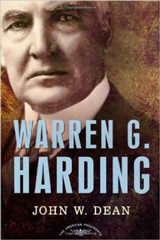
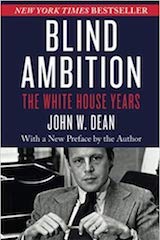

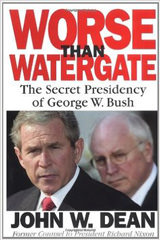
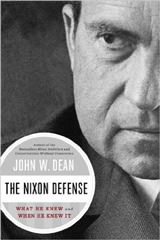
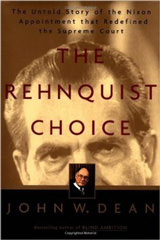
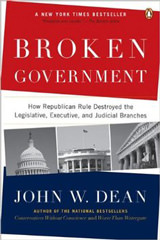
Just to be perfectly clear, in early 1972 before there was a Watergate an individual that aided in Richard Nixon’s early career stated to me that there were some bad people in the Republican Party that we needed to rid the party of. Later in the summer of 1972 he said people were doing things they shouldn’t be doing to win an election that was already won because times were good and the mailman was sticking a government check in every mailbox. Conservatives were mad at Nixon for instituting wage and price controls, opening China and abandoning Formosa(Taiwan) and basically surrendering in Vietnam while furnishing the old Soviet Union with food because their harvesting methods were so poor they had highly trained MIG pilots standing down to pick apples and do other harvesting. Deep Throat who furnished the crucial information was an FBI agent and never explained his motivation even after J. Edgar Hoover died and could no longer threaten people with releasing tawdry details. Hoover’s files also disappeared, so a lot of people in Washington didn’t know if they should be worried or relieved. As for abortion, many people believed in population control and the Roe v. Wade decision tilted the argument because a lot of parents were suffering with runaway kids joining commune where free love was the norm and the mother wasn’t sure who the father was. The key damage is quite simply those of faith putting their faith in politicians. Today moral discussions are seen in a political light and therefore lose their sanctity. Religious leaders wielded more political influence when they spurned government money and followed their own conscience. While Roe v. Wade was a pivotal moment, the conditions were made ripe by a lot of other factors. Today we are faced with “breeders” from cults and gangs that have no intention of parenting the child but forbid the mother to get an abortion. The argument and conditions today are much different than those almost a half century ago.
Convicted felon as well.